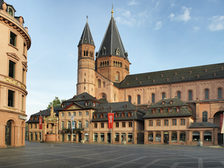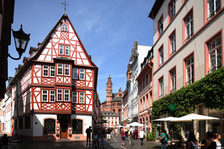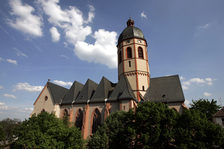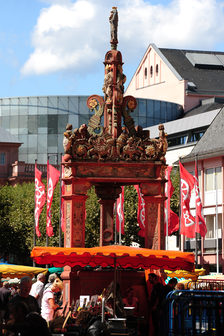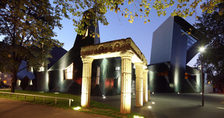Famous sights. Live Mainz!
Joy of life, enjoyment of wine, and a townscape that combines old with new – this is Mainz. Here you can read what makes up the town characteristics of Rhineland Palatinate’s state capital.
The state capital of Rhineland-Palatinate combines an ancient culture with joie de vivre. It is the home of the German Wine Institute and is the wine capital of Germany; outside the city is the largest German wine-growing area, Rheinhessen, with a number of award-winning vintners. In 2011, Mainz was named the “City of Science” – this has given fresh momentum to the scientific location and the regional economy to this day.
In the picturesque old town around the Romanesque St. Martin’s Cathedral, you can stroll through winding streets. Behind the lovingly restored half-timbered, Baroque and Rococo façades, jewellery and clothing boutiques, little studios, typical Mainz wine taverns and restaurants invite you on a journey of discovery.
Lovers of the works of Marc Chagall make a pilgrimage to St. Stephan’s Church with its famous blue stained glass windows, unique in Germany. The largest Roman theatre north of the Alps can be found in the southernmost part of the old town as well. The cityscape and the various city panoramas are shaped by St. Martin’s Cathedral.
As one of the three imperial cathedrals on the Rhine, it has been the centre of life in the city for more than a thousand years. It is particularly lively in the cathedral squares on the three weekly market days. The most important Renaissance building in Mainz and the region, the Electoral Palace, enchants visitors with its idyllic location on the Rhine. It houses conference facilities and the exhibition rooms of the Roman-Germanic Central Museum.
Mainz is a city whose squares are characterised by fountains of all eras and styles. Out of more than one hundred fountains, two deserve a special mention: the market square fountain, the oldest fountain and a colourful meeting place at the cathedral, and the carnival fountain, which captivates visitors with its variety of figures and provides a multi-facetted picture of carnival culture all year round.
The newest sight in the city is the new synagogue building of 2008 in the Mainz-Neustadt district. The synagogue with its eloquent architecture is a special place as a symbol of reconciliation and Jewish life returning to the city.


